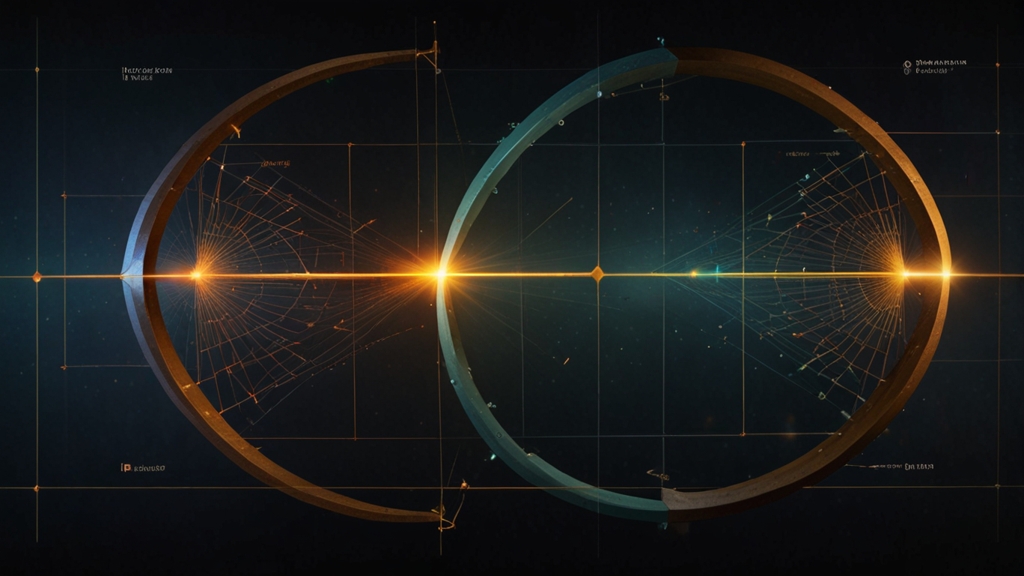Geometry Through History: A Timeline of Discovery
Geometry, a branch of mathematics dealing with shapes, sizes, and properties of space, has a rich history that spans across several millennia. This narrative continues to evolve as new discoveries and technologies enhance our understanding. In this article, we will explore significant milestones in the journey of geometry from ancient to modern times.
Ancient Civilizations and Early Geometry
The origins of geometry can be traced back to ancient civilizations, where it was initially used for practical purposes such as land measurement and architecture. Some of the earliest recorded geometric ideas come from ancient Egypt and Babylon.
“The ancient Egyptians used geometry primarily to re-establish boundaries after the annual flooding of the Nile River and for constructing their monumental architecture, including the pyramids.”
In Mesopotamia, the Babylonians developed early geometric principles, primarily for astronomical purposes and for solving land measurement problems. Although their understanding was mostly empirical, they laid the groundwork for more systematic studies in geometry.
Greek Contributions and Systematization
The Greeks played a pivotal role in transforming geometry into a formal mathematical discipline. Thales of Miletus is often credited with initiating Greek geometry by diverting attention from empirical problem-solving to logical reasoning.
However, it was the work of Euclid, a mathematician in Alexandria, that had the most profound and lasting impact. His treatise Elements compiled and systematically presented the geometric knowledge of his time, establishing the axiomatic method that underpins modern mathematics.
“Euclid’s Elements remained the definitive geometry textbook for over two millennia, shaping geometric thought and education through its rigorous approach.”
Other notable Greek mathematicians include Pythagoras, known for the Pythagorean theorem, and Archimedes, whose work in geometry and calculus was centuries ahead of its time. Their contributions laid the foundation for the future of geometry.
Medieval and Renaissance Developments
During the medieval period, Islamic scholars preserved and expanded upon Greek geometric knowledge. Mathematicians such as Al-Khwarizmi and Omar Khayyam not only translated Greek works but also made significant contributions of their own. Khayyam, for example, worked on the classification and solution of cubic equations using geometric methods.
The Renaissance period in Europe saw a revival of interest in Greek mathematics, leading to fresh discoveries and innovations. The development of perspective in art and the rigorous study of conic sections by figures like Johannes Kepler further enriched the field of geometry.
The Emergence of Analytic and Non-Euclidean Geometry
The 17th century marked the birth of analytic geometry, thanks to René Descartes and Pierre de Fermat. By introducing a coordinate system to link algebra and geometry, they paved the way for the development of calculus and vast new areas of mathematical exploration.
In the 19th century, the discovery of non-Euclidean geometry by mathematicians such as Carl Friedrich Gauss, Nikolai Lobachevsky, and János Bolyai challenged the long-standing belief that Euclidean geometry was the only valid geometric framework. This breakthrough showed that alternative geometric systems, where Euclid’s parallel postulate did not hold, were logically consistent.
Modern Geometry and Its Applications
In the 20th and 21st centuries, geometry has continued to evolve, with advancements in topology, differential geometry, and algebraic geometry, among other subfields. The application of geometric concepts extends beyond theoretical mathematics to fields such as physics, computer science, and engineering.
One of the most noteworthy applications is in the theory of general relativity, where Albert Einstein used differential geometry to describe the fabric of spacetime. In computer science, algorithms based on geometric principles are critical in areas like computer graphics, game design, and robotics.
Conclusion
From the practical beginnings in ancient Egypt and Babylon to the sophisticated and abstract developments of modern times, geometry has continuously shaped and been shaped by our understanding of the world. The journey of geometric discovery is filled with remarkable milestones that highlight human ingenuity and the persistent quest for knowledge.
“As we continue to explore and unravel the complexities of the universe, geometry remains an essential tool, illuminating the intricate patterns and relationships that define our reality.”











